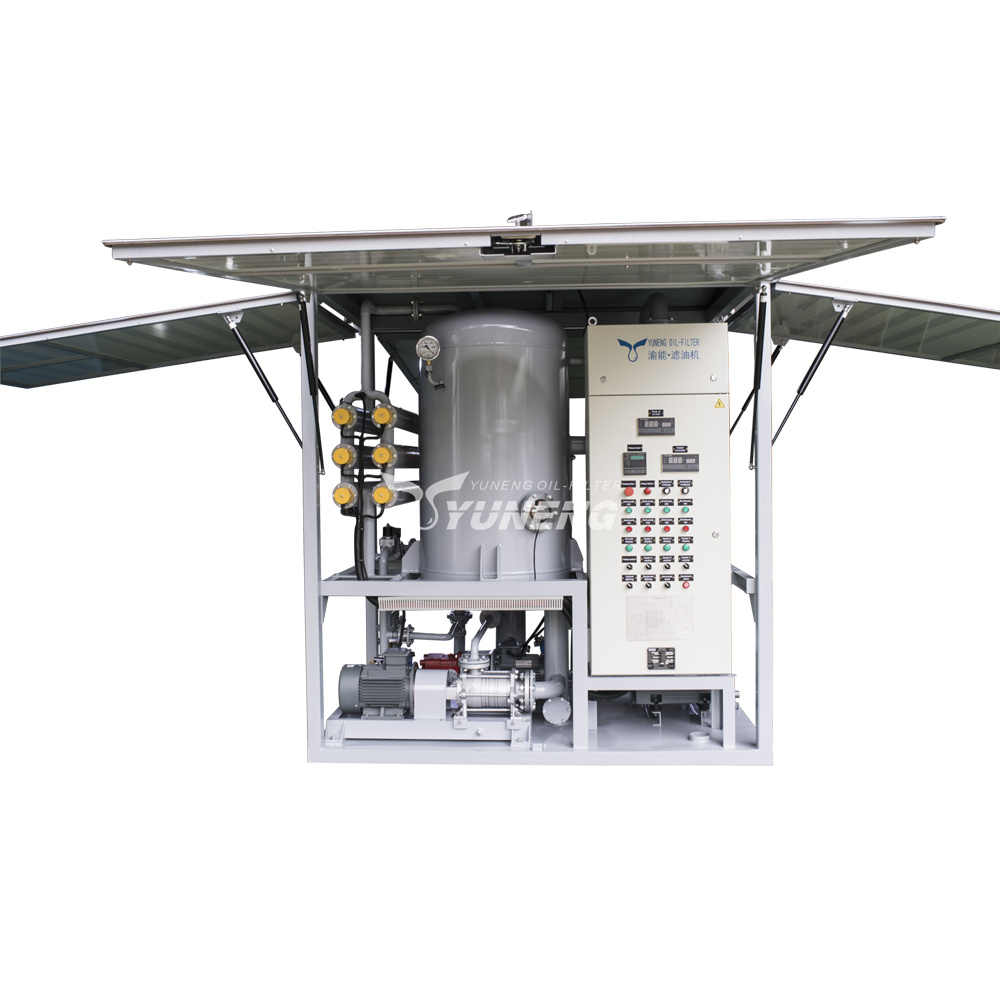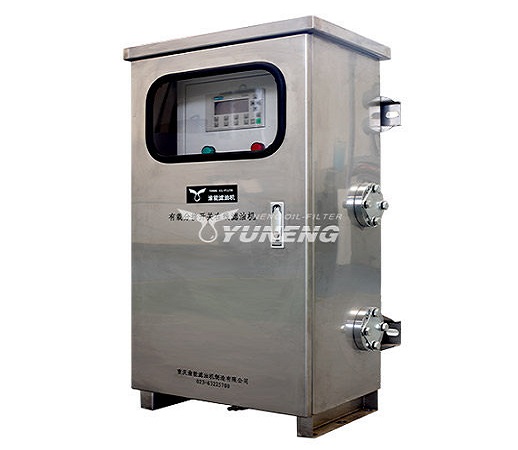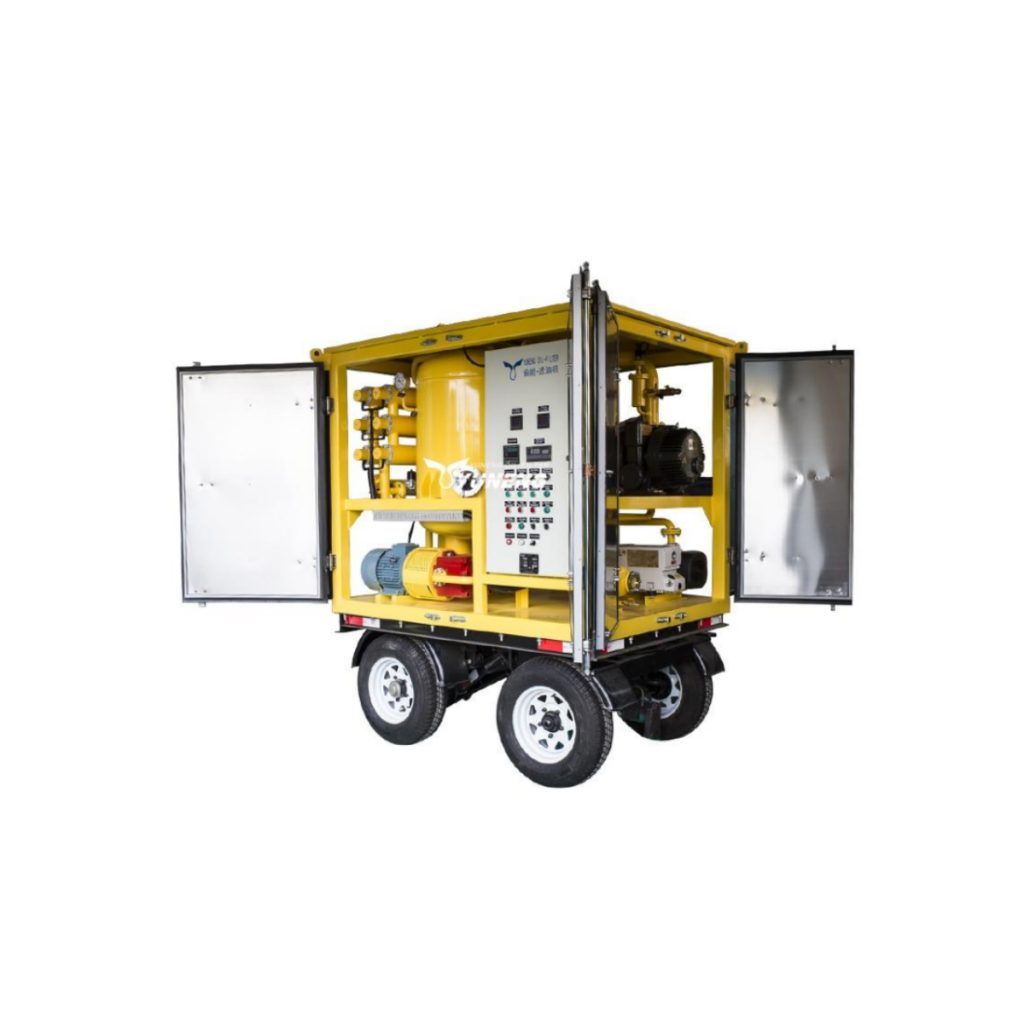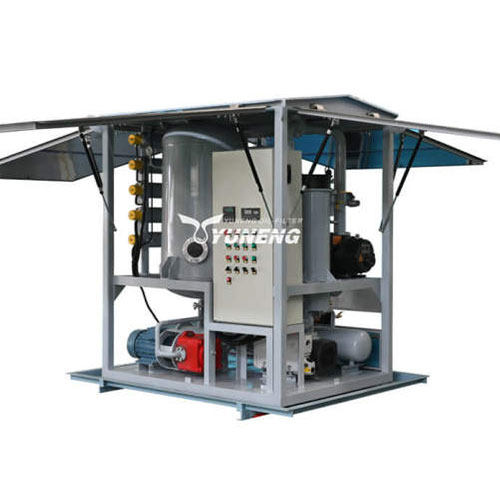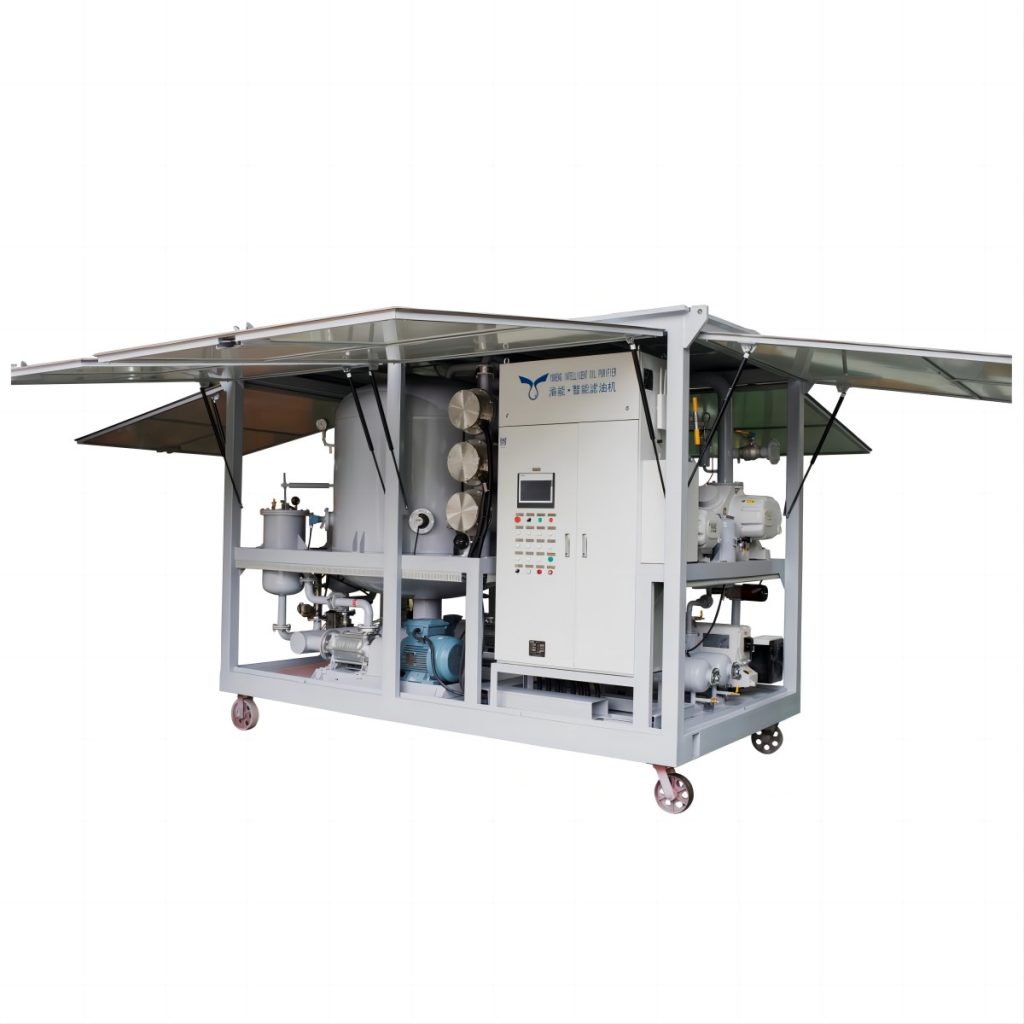Transformer Oil Reclamation vs. Regeneration: Choosing the Right Method for Your Needs
Maintaining the health of your transformer oil is paramount for ensuring the safe and efficient operation of your transformers. Over time, transformer oil degrades due to factors like heat, oxidation, and exposure to air. This breakdown can lead to reduced performance, increased risk of faults, and ultimately, transformer failure.
Fortunately, we have two main methods to restore transformer oil: reclamation and regeneration. Let’s delve into each method to help you choose the right one for your specific needs.
What is Transformer Oil Reclamation?

Transformer oil reclamation is a cost-effective process that breathes new life into used transformer oil, extending its service life and delaying the need for expensive oil replacement. During reclamation, the oil is typically passed through a multi-stage filtration system. This system removes various contaminants that accumulate over time, including dirt, sludge, and moisture. Some reclamation processes might also utilize absorbent materials like clay to tackle more stubborn contaminants like polar compounds and byproducts of oil oxidation. While reclamation doesn’t transform the oil back to a brand new state, it effectively removes enough impurities to significantly improve its quality and performance. This allows the reclaimed oil to be safely reused in your transformers, reducing environmental impact and offering substantial cost savings compared to complete oil replacement. Reclamation is a particularly attractive option for facilities that perform regular oil testing and maintenance, catching degradation early and maintaining the oil’s health throughout its lifespan.
What is Transformer Oil Regeneration?
Transformer oil regeneration is the heavy-duty sibling of reclamation, offering a more comprehensive restoration process for significantly degraded oil. This intensive method utilizes advanced techniques like high-vacuum distillation or clay adsorption to remove a wider range of contaminants on a molecular level. Unlike reclamation, which primarily focuses on removing particles and water through filtration, regeneration tackles more stubborn impurities. It can effectively remove dissolved gases like hydrogen and oxygen, which can contribute to arcing and faults within transformers. Regeneration also addresses highly polar compounds, a byproduct of oil degradation that can reduce insulation strength.
Additionally, some regeneration processes can even target specific degradation products that simple filtration can’t handle. The result is oil with properties much closer to virgin oil. This translates to superior performance benefits for your transformers, including a higher breakdown voltage for improved insulation, enhanced oxidation stability to resist further degradation, and significantly reduced moisture content, which is crucial for preventing electrical discharges within the transformer. While regeneration offers a more thorough restoration, it’s important to remember that it’s a more complex and resource-intensive process compared to reclamation.
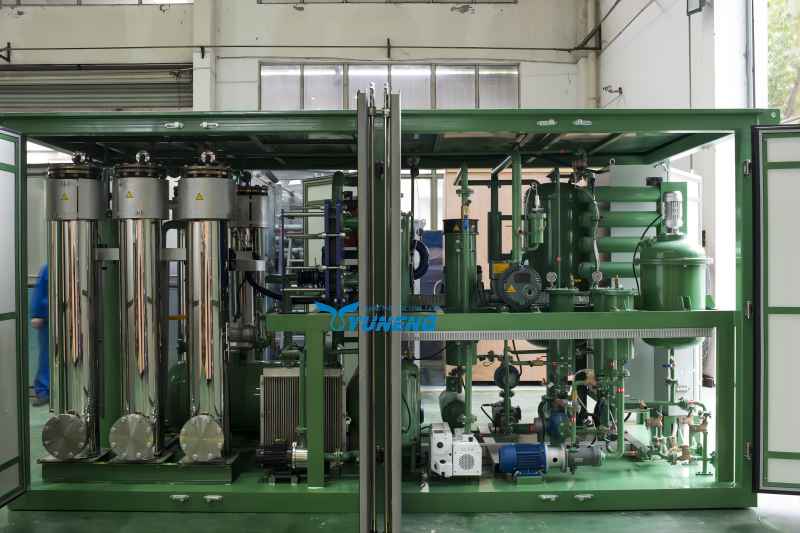
Choosing the Right Method: Reclamation vs. Regeneration
Deciding between transformer oil reclamation and regeneration requires a careful evaluation of several factors beyond just the level of contamination. Here’s a deeper dive into considerations that will help you make the most informed choice:
| Factor | Reclamation | Regeneration | |
| Process Intensity | Less intensive, utilizes filtration and potentially absorbent materials | More intensive, employs techniques like high-vacuum distillation or clay adsorption | |
| Contaminants Removed | Effectively removes common contaminants like dirt, sludge, water, and some polar compounds | Removes a wider range of contaminants on a molecular level, including dissolved gases, highly polar compounds, and complex degradation byproducts | |
| Oil Restoration Level | Improves oil quality by removing contaminants and impurities, extending the oil’s lifespan | Restores oil properties closer to virgin oil, offering superior performance and significantly extended transformer life | |
| Cost | More cost-effective due to simpler process and lower equipment requirements | Higher cost due to the use of specialized equipment and potentially longer processing times | |
| Turnaround Time | Faster turnaround time, often completed on-site using portable reclamation units, minimizing downtime for transformers | Slower turnaround time, might involve off-site processing at a specialized facility, leading to longer downtime | |
| Suitability for Oil Condition | Ideal for mildly to moderately degraded oil with acceptable moisture content, dissolved gas levels, and minimal oxidation byproducts | Best suited for severely degraded oil with high moisture content, significant presence of dissolved gases, and advanced oxidation products | |
| Ideal for | Facilities that perform regular maintenance and oil testing, cost-conscious approach to maintaining healthy oil and extending transformer life | Maximizing transformer performance and extending its lifespan when superior oil quality is critical |
Additional Considerations Beyond Reclamation vs. Regeneration
While reclamation and regeneration are the two main restoration methods, choosing the right approach requires a nuanced understanding of your specific situation. Here are some additional factors to consider:
- Oil Testing and Analysis: A comprehensive oil analysis is essential before deciding on any restoration method. This analysis will identify the specific contaminants present, their concentration levels, and the overall health of the oil. Based on the results, you can determine the severity of degradation and choose the most effective method to address the identified issues.
- Regulatory Requirements: Certain industries or regulations might have specific requirements for transformer oil quality. Ensure the chosen restoration method (reclamation or regeneration) delivers oil that meets the mandated standards for your application. Consulting relevant regulations beforehand can save you time and resources in the long run.
- Overall System Health: Consider the broader context of your transformer system’s health. If you’re dealing with chronic oil degradation issues, regeneration might be a better long-term solution to address the root cause and prevent future problems. However, if the degradation is likely due to isolated factors like a minor leak or infrequent oil changes, reclamation might be sufficient to address the immediate problem and improve overall system health.
- Seeking Expert Advice: Consulting with a transformer oil specialist is highly recommended. They can analyze your oil testing results, assess your specific needs and operational constraints, and recommend the most appropriate restoration method for your situation. They can also help you navigate any regulatory requirements and ensure you’re choosing the most cost-effective solution for your transformers’ health and longevity.
Transformer Oil Reclamation Plant with Reactivated Regeneration Filters
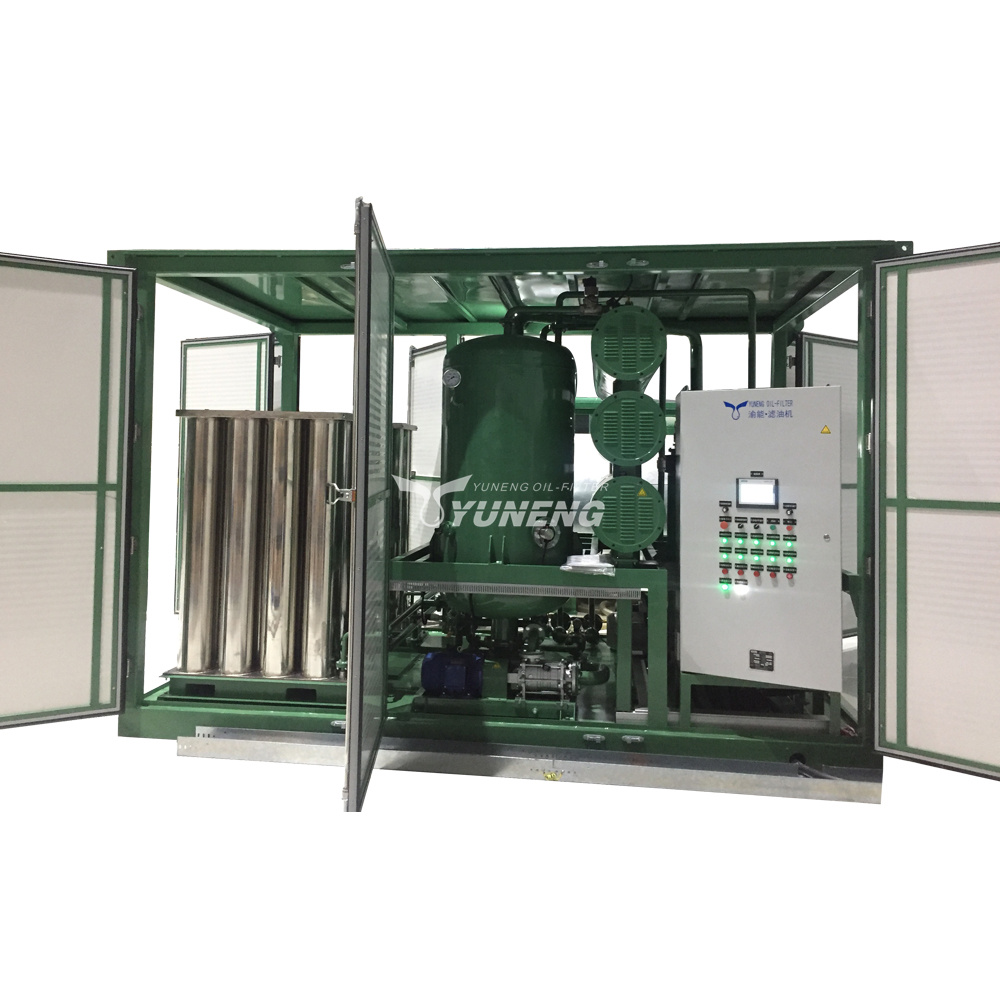
When it comes to transformer oil regeneration, a key factor influencing operational costs is the lifespan of the regeneration media. YUNENG’s Transformer Oil Reclamation Unit with Reactivated Regeneration Filters addresses this challenge with an innovative approach.
This machine combines the functionalities of both filtration and regeneration, offering a comprehensive solution for restoring transformer oil health. During the regeneration process, the oil is passed through various stages, including:
- Primary and Fine Filtration: These stages remove larger particles and impurities.
- Adsorption with Reactivated Clay: Here’s where YUNENG’s technology shines. The machine utilizes specially formulated clay-based regeneration media with a unique reactivation process. This process extends the life of the media significantly compared to traditional methods. Reactivated clay effectively removes polar contaminants, and oxidation products, and improves the oil’s dielectric strength, a crucial parameter for transformer performance.
- Vacuum Dehydration and Degassing: These processes remove dissolved moisture and gases from the oil, further enhancing its insulating properties.
The key advantage of YUNENG’s reactivated regeneration filters lies in their reusability. The machine employs a built-in regeneration system that can revitalize the clay media multiple times. This translates to significant cost savings over time, as you won’t need to frequently replace the filters.
Whether you choose transformer oil reclamation or regeneration, YUNENG’s Transformer Oil Reclamation Machine with Reactivated Regeneration Filters provides a powerful and cost-effective solution for extending the life of your transformer oil and maximizing the performance of your transformers.
For more information on YUNENG’s comprehensive range of transformer oil purification machines, please feel free to contact us.

